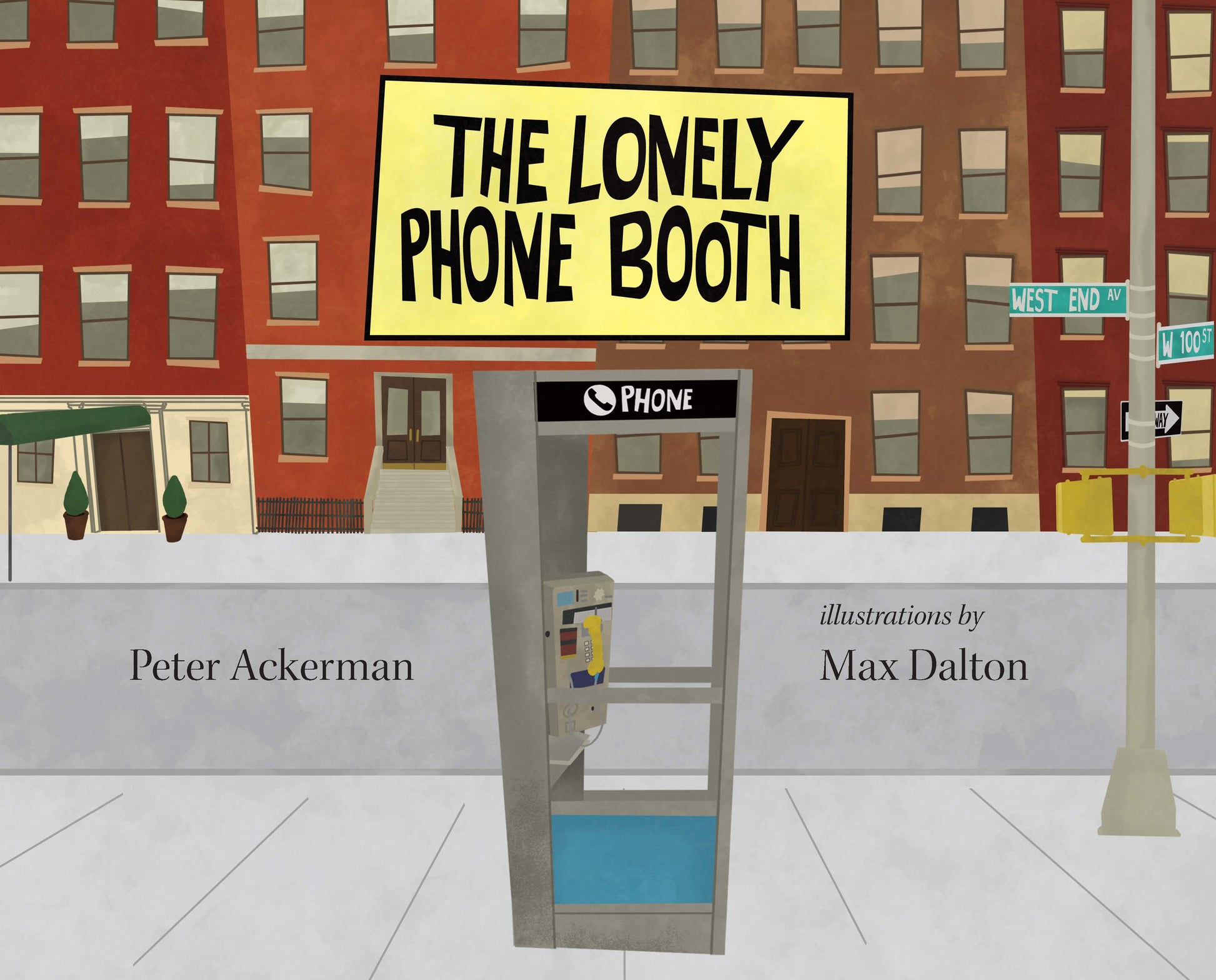
Remember the days when phone booths stood on every street corner? If you had to make a call, you'd step inside the little booth, lift the phone off the hook, put a coin in the slot, listen for the click, push the buttons, and hear it ring? And for only 25 cents, in the quiet of the booth, you could call your grandmother, or let the office know you were running late, or get directions for a birthday party...
This is the story of one of the last remaining phone booths in New York City, the Phone Booth on the corner of West End Avenue and 100th. Everyone used it — from ballerinas and girl scouts, zookeepers and birthday clowns, to cellists and even secret agents! The Phone Booth was so beloved that people would sometimes wait in line to use it. Kept clean and polished, the Phone Booth was proud and happy . . . until, the day a businessman strode by and shouted into a shiny silver object, "I'll be there in ten minutes!" Soon everyone was talking into these shiny silver things, and the Phone Booth stood alone and empty, unused and dejected.
How the Phone Booth saved the day and united the neighborhood to rally around its revival is the heart of this soulful story. In a world in which objects we love and recognize as part of the integral fabric of our lives are disappearing at a rapid rate, here is a story about the value of the analog, the power of the people's voice, and the care and respect due to those things that have served us well over time.
The Lonely Phone Booth, the first children's book by Peter Ackerman, a screenwriter and playwright, takes a more intimate look at a slice of life in a New York City neighborhood. In a happenstance befitting this warm, quirky story, it turns out that the author and I reside in the same building just a few blocks from the real phone booth, at 100th Street and West End Avenue, that inspired his book. Scene-stealing illustrations by Max Dalton convey the story's nostalgic sensibility. His saturated colors and cartoonish faces suggest Miroslav Sasek's 1960 tribute "This Is New York," and other books in that series . . . a [cozy] story celebrating the fabric of a neighborhood, that intangible quality New Yorkers treasure. —The New York Times Book Review
Evoking the same kind of New York charm as favorites like The Little Red Lighthouse and the Great Gray Bridge and The House on East 88th Street, screenwriter Ackerman celebrates a humble phone booth (still standing at 100th Street and West End Avenue) that saves the Upper West Side—and vice versa. Fellow newcomer Dalton's retro vignettes set the scene with square-jawed men in skinny ties, Girl Scouts in braids, and assorted neighborhood clowns, ballerinas, and secret agents while Ackerman explains how things used to be. "Each week, phone company workers came to clean and polish the Phone Booth, to collect the deposited coins, and to make sure that its buttons were working properly." The booth has plenty of customers until people start holding "shiny silver objects" to their ears, puzzling the phone booth and eradicating the long lines of callers waiting "just to wish their grandmas a happy birthday." An electrical storm reveals the vulnerability of the cellphone network ("Hey, does this old thing work?" a construction foreman asks, eyeing the dilapidated booth), causing the locals to reevaluate its worth. Cultural history of the best sort. —Publishers Weekly
This endearing little book straddles two technological eras in its tale of the life and times of a public phone booth on the corner of West End Avenue and 100th Street in New York City. The story and artwork introduce children to all the life and varied people of the big city, from secret agents to ballerinas to grandmas. Just when the last of the phone booths is to be carted away, a cell phone disaster reminds everyone that some parts of the good old days are worth keeping around. For ages 4-8. (July) —ForeWord Magazine
Peter Ackerman's winning text is wonderfully complimented by Max Dalton's retro style artwork. The art not only tells a splendid story in and of itself, but it also celebrates the colorful and diverse people who live in New York City. —Through the Looking Glass Children's Book Review
The Lonely Phone Booth is filled with nostalgic, colorful illustrations that bring back the era of '60's children's book illustrations, which harmonizes well with the story. The Lonely Phone Booth is perfect for children age 4 and up, and will help preserve some history of communication technology while amusing and entertaining a young audience. —Midwest Book Review/Children's Bookshelf


